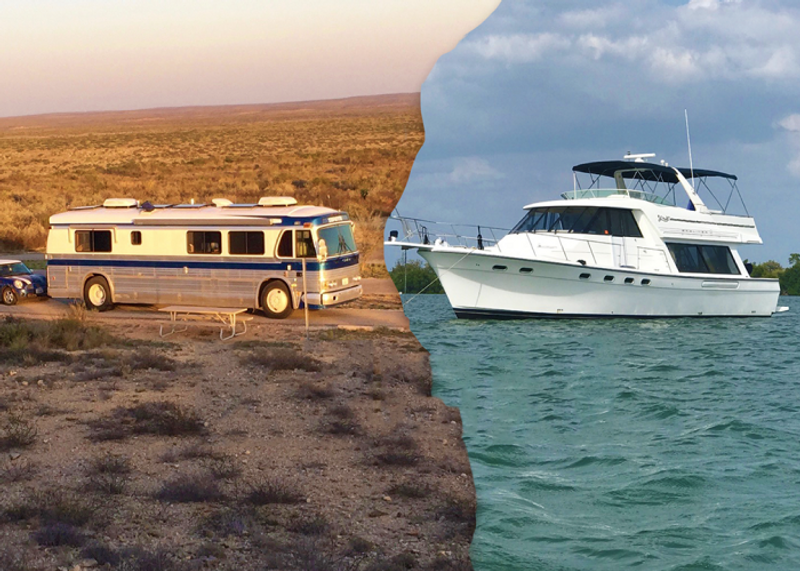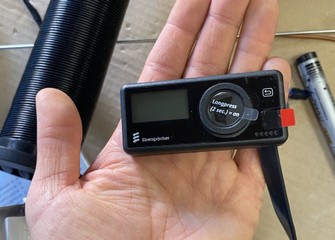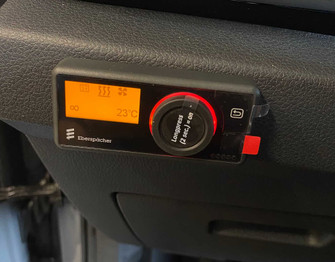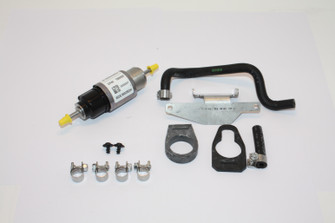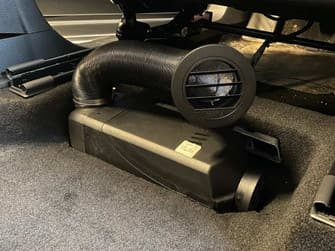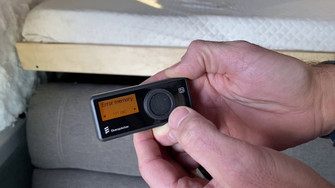Choosing a diesel heater for your van or boat
Posted by Heatso on 10th Apr 2022
When traveling in a campervan or RV, you need to be prepared for colder climates. A reliable air diesel heater will keep your cabin nice and warm, while a diesel water heater will keep your water flowing at temperatures below zero.
CHOOSING A DIESEL HEATER FOR YOUR VAN OR BOAT
A DIESEL HEATER TO KEEP YOU WARM
When traveling in a campervan or RV, you need to be prepared for colder climates. A reliable air diesel heater will keep your cabin nice and warm, while a diesel water heater will keep your water flowing at temperatures below zero.
If you’re planning to visit the beautiful snowy mountains, or just happen to live somewhere with cold weather, it’s essential that you have a way to stay warm. Find out how air heaters work, and how to choose a Webasto or Espar diesel heater to keep your motorhome nice and cozy.
ON THIS PAGE
WHY ARE DIESEL HEATERS THE POPULAR CHOICE?
The three types of air heaters you can choose from are petrol (gasoline) heaters, electric heaters, and diesel heaters. Electric heaters aren’t as powerful and can only heat small spaces, but they don’t require any fuel. Petrol heaters are as powerful and versatile as diesel heaters but they’re less efficient and are better suited for campervans that run on gas. As a rule of thumb, you want the heater’s fuel type to match the fuel type of the van.
Diesel heaters are highly efficient and come in a much wider range of power output than their gasoline counterpart. There are combined heaters, like the Dual Top ST 6, which heat up both air and water simultaneously, which saves a lot of space. Diesel boat heaters are perfectly suited for marine applications, while RV diesel heaters can heat up spaces as large as an A-Class RV. Their power, affordable price, silent operation, and high-altitude capabilities make diesel heaters the most popular choice.
WHAT IS A DIESEL AIR HEATER, AND HOW DOES IT WORK?
As the name suggests, a diesel heater is a portable heating unit that runs on diesel fuel, which is a common fuel type for RVs, vans, campers, and boat engines. You can hook up the heater to your vehicle’s fuel tank, which makes installing your heating unit much more convenient. These heaters are highly efficient and will provide you with hot water and warmed air consistently and reliably.
Motorhome diesel heaters pull in air from the outside, pass it into the combustion chamber, mix it with fuel (in this case, diesel), and ignite it to heat up the large surface area of the heat exchanger. The diesel heater’s separate internal fan pulls cold air past the heat exchanger, where the air heats up and is blown back into the cabin. The exhaust from combustion is never mixed with the fresh air and is safely expelled outside.
THINGS TO CONSIDER WHEN CHOOSING A DIESEL HEATER
There are two main factors that we need to consider when choosing a diesel air heater: heat output and traveling altitude. The required heat output will depend on the size of your campervan as well as the quality and effectiveness of the insulation you’re using. The most common output variants come in 6800 BTU (2KW) and 13600 BTU (4KW), but there are water heaters up to 27,300BTU (8KW).
If you’re traveling in a small-to-medium size vehicle, for example, the 144” or the 170” Sprinter van, then a 2KW diesel heater will be more than enough to keep your home warm. In this case, a popular option is the Espar Airtronic S2 D2L. This Espar diesel heater was our best-selling product last season, thanks to its nearly silent operation, highly efficient fuel consumption, and the ability to function at altitudes of up to 9900 feet (~3000m).
Choosing the right heat output
There are two main factors that we need to consider when choosing a diesel air heater: heat output and traveling altitude. The required heat output will depend on the size of your campervan as well as the quality and effectiveness of the insulation you’re using. The most common output variants come in 6800 BTU (2KW) and 13600 BTU (4KW), but there are water heaters up to 27,300BTU (8KW).
If you’re traveling in a small-to-medium size vehicle, for example, the 144” or the 170” Sprinter van, then a 2KW diesel heater will be more than enough to keep your home warm. In this case, a popular option is the Espar Airtronic S2 D2L. This Espar diesel heater was our best-selling product last season, thanks to its nearly silent operation, highly efficient fuel consumption, and the ability to function at altitudes of up to 9900 feet (~3000m).
Keeping altitude in mind
At what altitude will you be using the diesel heater? This is important to know, as the altitude affects the combustion inside the heater. As elevation increases, air density decreases, which also decreases the amount of oxygen in the air. This reduction of oxygen makes it harder for the combustion engine inside the air heater to do its job. This is why some parking heaters start to bog down, stall, or fail to start when the altitude gets too high.
For example, the Webasto marine diesel heater Air Top 2000 STC is guaranteed to function properly up to an altitude of 5000 feet (~1500m). As long as you aren’t planning a trip to the mountains, this 6800 BTU, small, efficient, and quiet Webasto heater is great for most RVs and marine applications.
Adjusting to high altitudes
For diesel heaters that are made for lower altitudes, there are amazing conversion kits that make the unit suitable even for the highest mountains. The Espar HAK (High Altitude Kit) has a built-in air pressure sensor that can accurately measure altitude. As the altitude changes, the Espar HAK automatically adjusts the oxygen and fuel mixture that is sprayed into the combustion chamber.
With a high-altitude kit, an Espar Airtronic D2 can easily exceed its default limit of 7200 feet (~2200m). That means you can comfortably enjoy the views of the Grand Canyon, where the elevation is around 7000 feet. But if you want to go camping in Yellowstone National Park, where the average altitude is around 8000 feet, you need to get the high altitude conversion kit.
OTHER THINGS TO CONSIDER WHEN CHOOSING A DIESEL HEATER
Now that we’ve covered the two most important technicalities of choosing a new diesel heater, it’s time to think about comfort. The heater should be quiet, so it won’t disturb you in your sleep or when you take a break from driving. The newest 3rd generation Espar Airtronic AS3 D2L features an optimized metering pump, improved brushless motor, and stepless heating control, which ensures nearly silent operation.
The heater should also be easy to install, maintain, and if necessary, replace. For example, Espar air diesel heater kits are very flexible. If you get the Espar Airtronic D2L kit and later decide that you want a 4KW heater instead, you can simply replace the unit with an Airtronic D4L, and keep the rest of the kit. The only other parts that you would have to change for such a conversion would be the outlet hood, ducting section, and outlet.
Being able to control the temperature of your cabin from a distance or even using your mobile phone is a very useful feature to have. A controller like the EasyStart Remote+ or Easystart Web Control System will let you accurately set the temperature, as well as monitor and manage your heater from anywhere in the cabin. If your Espar diesel heater suddenly stops working, a controller will help pinpoint the issue with descriptive and useful error codes.
INVEST IN A HEATER THAT WILL LAST YOU FOR YEARS
Now that you know how to choose a diesel heater for your campervan, you can see why we always strongly advise against buying cheap-made Chinese diesel heaters. A poorly made diesel heater will last significantly less time than a genuine Espar or Webasto heater. Chinese heaters are also significantly louder, pose serious health risks, and can even ignite.
On the other hand, high-quality diesel heaters are made to last a lifetime and are engineered to perfection. They’re quiet, fuel-efficient, durable, and with a great price-to-performance ratio. They’re the ideal investment for your recreational vehicle or vessel for years to come.
SUMMARY
This guide has covered a lot of ground and we hope it has provided you with some general guidance and a direction to think in. Nonetheless, it’s worth keeping in mind that every road trip is unique and there will be items that you might need that we haven’t included in our campervan packing list. When planning your next trip, try going through each category and see if there’s anything you’d like to add, or perhaps leave out something unnecessary. And most importantly, enjoy the adventure!
